10 best spells in D&D 5E
These spells are invaluable to any party.
The best Dungeons & Dragons 5th Edition spells come in many forms. Some even grant you the power to exist in many forms. We're not just talking about the 5E spells with the highest damage here, we're also looking at some of the most useful D&D 5E spells around. Standing proud alongside the flashy and devastating damage-dealing spells available across the various 5E spell lists is a mass of utility spells, buff spells, warding and healing spells that will be indispensable to your party in any campaign. Of course, the most helpful D&D 5E spells will change moment-to-moment depending on your situation, and the type of enemy you're fighting, but there are some clear winners for me where the overall best 5E spells are concerned.
For the most part, the type of caster you choose will decide how you pick your spells. It's important to remember that depending on your class some spells - entire magic schools, even - will be out of bounds to your caster, while for others it will be their bread and butter. The warlock class, for example, has access to a great deal more conjuration spells than, say, the cleric. And while the divinely gifted cleric can throw out a ton of healing spells, the arcane-affiliated Wizard – with more spells in their arsenal than they know what to do with – doesn't have the option to heal using magic at all, bar sapping it through necromancy.
Best spells in D&D 5E
- True Polymorph
- Meteor Swarm
- Inflict Wounds
- Abi-Dalzim's Horrid Wilting
- Healing Word
- Shield
- Time Ravage
- Detect Magic
- Wish
- Silvery Barbs
We’ve made sure to include spells available to each different class in this best D&D 5E spell list, so no one gets left out. But remember, just because your class isn't listed next to the spell you've got your eye on, doesn't mean you can't potentially access it with the help of the Magic Initiate feat we've listed on our best D&D feats guide.
Many of the spells I've listed below are 8th level and above. That's because there aren't many low level spells that scale well, at least when it comes to damage dealing. Most spells you'll want to replace when you gain access to higher level options. There are a select few low-level spells that continue to be devastating, though it's mostly utility and buff spells you'll be hanging on to as you level up your character.
1. True Polymorph
9th level Transmutation | wizard, warlock, bard | Basic Rules
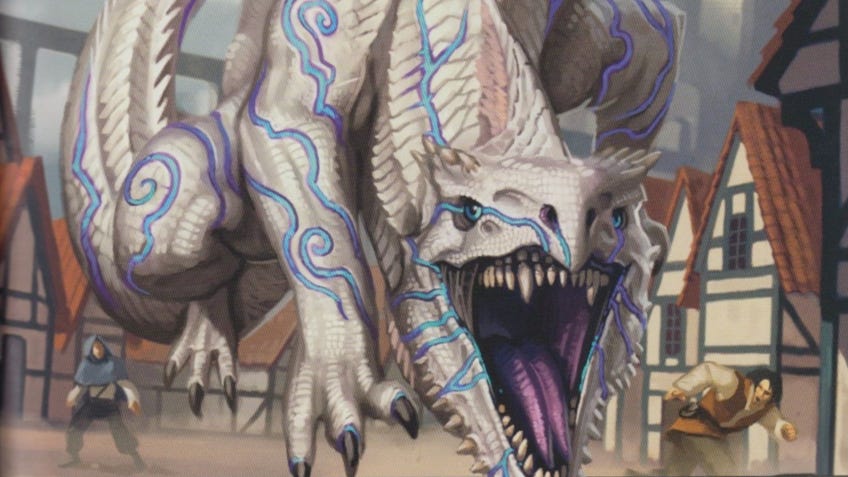
This is one immense spell for those who can't decide on who they want to be, or who they want to fight for that matter. Whether you've a mind to ravage the battlefield by embodying terrifying creatures, or belittle your enemy with the swish of your wand, turning them into something you can squash it underfoot, True Polymorph is one of the coolest spells in D&D 5E.
With this spell, you can transform any being – be they beast, fey, humanoid, dragon… even the undead – into another of the same challenge rating/level, or lower. Of course, that includes yourself, and in reaching those higher levels it'll give you access to some extremely high-damage forms to play with. You can bet there will be some legendary battles taking place in your campaign if you nab this spell as a wizard, warlock or bard.
2. Meteor Swarm
9th level Evocation | sorcerer, wizard, bard (College of Lore) | Basic Rules
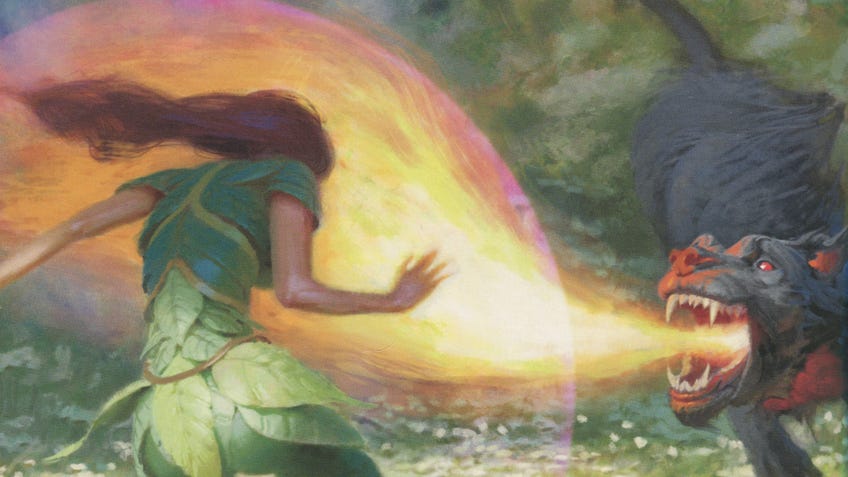
I've decided not to put Fireball on this list, despite there being a distinct lack of low level spells dealing epic-damage. But if you're one for the hotter hostilities, Meteor Swarm is the one you want to swap Fireball out for when you get a chance. It's essentially Fireball on steroids.
Meteor Swarm summons four flaming rocks that descend from the heavens, landing a devastating barrage against everything in a 40-foot radius that fails a dexterity throw. Not only does it deal 20d6 fire damage, but also 20d6 bludgeoning damage. That counts for allies, too. So if you want to avoid friendly fire - pun intended - give your pals fair warning. Remember, talking is a free action.
3. Inflict Wounds
1st level Necromancy | cleric, paladin (oathbreaker), bard (College of Lore) | Basic Rules

It may be basic, but for low level necromancers this is a mighty deadly spell. It does 3d10 necrotic damage at first level, with an additional 1d10 damage added for each spell slot level above that. It makes for a dangerous damage dealer that doesn't scale too badly at higher levels, either.
Just make sure you're not about to wander headfirst into a campaign involving nothing but undead enemies, or you'll have trouble. Unless you choose the Death Domain subclass as a cleric, of course. Hitting 6th level, your cleric will be able to bypass any pesky necrotic damage resistances, thanks to the Inescapable Destruction feature.
4. Abi-Dalzim's Horrid Wilting
8th level Evocation | wizard, bard (College of Lore), sorcerer | Elemental Evil Player's Companion/Xanathar's Guide to Everything
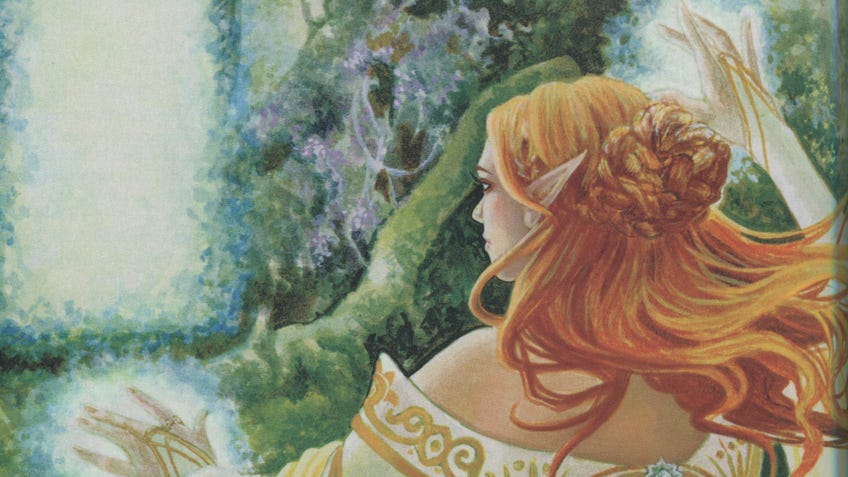
One of the more horrific spells on the list, this spell will see you desiccating enemies with necrotic damage that wicks away all the moisture in their bodies, as well as the area around them. Everything within 30 feet of a spot designated by the caster curls up into a dried husk, along with any non-magical plants that pesky enemy rangers might be hiding behind.
Constructs and undead are safe from the wilting, but water elementals and plant creatures are doubly screwed, rolling with disadvantage. On a failed constitution saving throw, the spell deals 1d8 damage per level, up to a maximum of 16d8. The ability to deal this much damage to multiple enemies at once is a perfect way to clear a battlefield of low-level enemies, if a little messed up.
5. Healing Word
1st level Evocation | artificer (alchemist), bard, cleric, druid | Basic Rules

Looking at the 1st level spell list, you might be inclined to pick up Cure Wounds. While this might be practical for healers who plan on being right there beside their teammates ready to give aid at a moments notice, that's very rarely the case. D&D enemies have no shame about blasting the field medic, so you'll want to keep out of the way of fire if you want to stay alive long enough to heal your friends.
Healing Word gives you the ability to heal from a distance, and although it doesn't provide them with as much healing as Cure Wounds would do, it pays to have a healing spell with 60 ft range. The ability to cast Healing Word as a bonus action also means you're not incapacitated in the process.
6. Shield
1st level Abjuration | wizard, sorcerer, warlock (hexblade), artificer (artillerist, battle smith) | Basic Rules
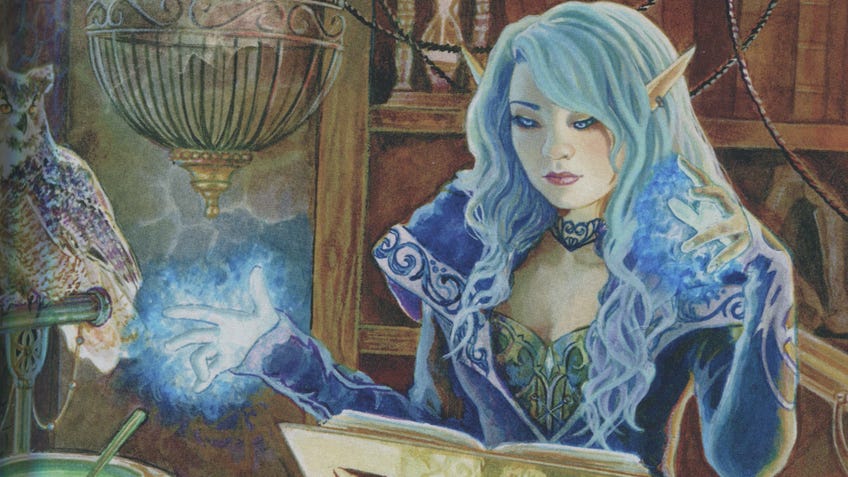
Every caster worth their weight in weave should be packing the Shield spell from the get-go, especially those squishy wizards. Casting it as a reaction, you're essentially equipped with a big nope button for when you've drawn too much attention to yourself in battle, and are expecting a barrage between now and your next turn.
Shield, as you might expect, creates a magical barrier adding a +5 bonus to your armour class until the start of your next turn, it's one spell that those without armour proficiencies will thank themselves for preparing. Combine it with Mage Armor and you've the potential to raise your character's AC to 17 + your dex modifier. That's not an insubstantial buff. And being able to cast Shield as a reaction even after the enemy's roll is revealed is invaluable when you're as squishy as most casters at low levels.
7. Time Ravage
9th level Necromancy/Chronurgy | bards (College of Lore), wizards | Explorer's Guide to Wildemount

While its immediate effects are dangerous enough, dealing out 10d12 damage on a failed saving throw and half that on a success, Time Ravage does more than just pack a necrotic punch. Target a recurring character and watch as their mortal form withers away over the next thirty in-game days. Sapping your enemy's life with such haste will make for a woeful reunion when they decide to rear their head again. You and your party can watch as they descend into decrepitude in the blink of a beholder's eye.
It could see your enemy doubling down on their evil-doings before they kick the bucket, though you never know. They could do a full u-turn in their old age and decide to give up the chase, and donate all their wealth to a charity instead. Either way, necromancers really do have the most disturbing spells.
8. Detect Magic
1st level Divination | artificer, cleric, bard, ranger, druid, sorcerer, wizard, paladin | Basic Rules
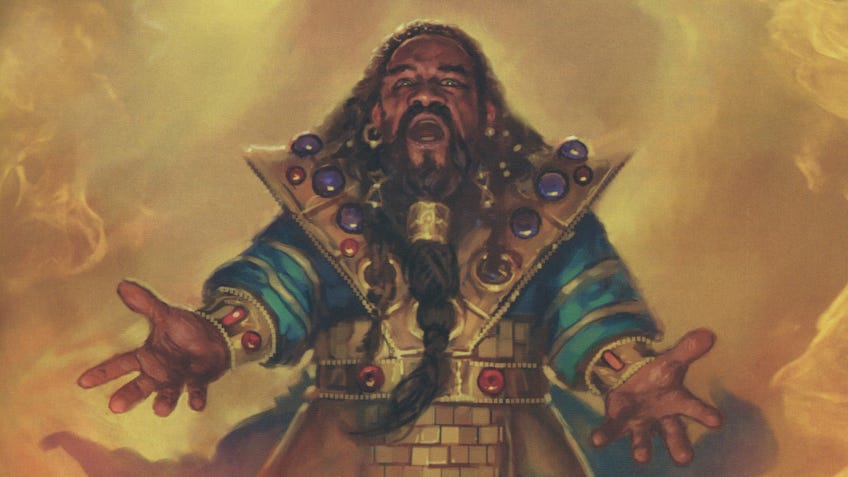
No matter the D&D campaign, Detect Magic is one of those spells that's always going to come in handy. Whether it's checking how deeply an area you've been tasked with exploring is saturated with magic, or seeing whether something - or someone - is under arcane influence, there's hardly a place throughout these magic-soaked realms where Detect Magic won't serve some kind of purpose.
Not only does the caster get to see exactly where the magic is emanating from by revealing its arcane aura, they can also ascertain the school of magic from which it comes. With that kind of knowledge, it can be much easier to prepare for certain enemy types. Knowing there's a necromancer around will give you a heads up to have your radiant spells at the ready.
9. Wish
9th level Conjuration | sorcerer, wizard | Basic Rules

While many GM's will hate you for using it, others will revel in the opportunity to mess with the party. Every good storyteller knows that wishes never quite go the way the wisher intended, and provided your GM is able to come up with potential catches to throw at you, Wish can be one of the most interesting spells for narrative tomfoolery.
If your favourite weapon in The Elder Scrolls IV: Oblivion was the Wabbajack, you're an appreciator of 'monkeys paw' style horror stories, or just love injecting a bit of chaos into your TRPG sessions, Wish is the spell for you. Make sure you ask your GM before you add it to your character sheet, though. Opinions differ wildly on its use because it has the potential to utterly derail a campaign.
10. Silvery Barbs
1st level Enchantment | wizard, sorcerer, bard | Strixhaven: A Curriculum of Chaos
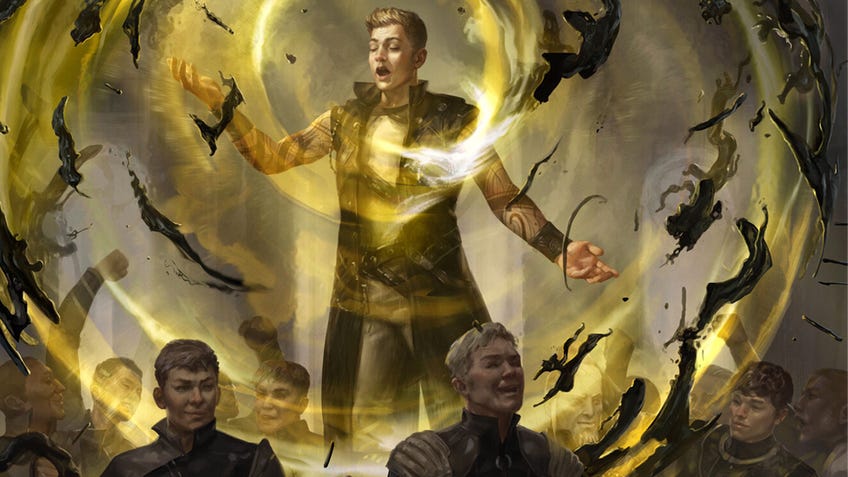
A newer addition to 5e that's almost broken levels of powerful, Silvery Barbs is a low level spell you should not ignore as a support caster. Not only does it distract and force your enemy to reroll, taking the lower figure – essentially forcing them into disadvantage – it also lets the caster pass advantage to another creature. That includes teammates, and even yourself, as long as it's used within the next in-game minute.
That buff doesn't stack, but since Silvery Barbs can be cast as a reaction, it doesn't take away from the actions you can make on your turn. That's a pretty smashing boon for any party, especially as it only uses up a single 1st level spell slot.










